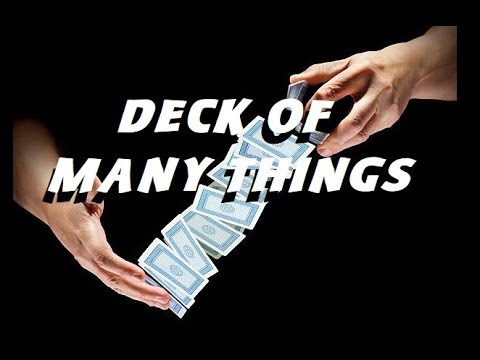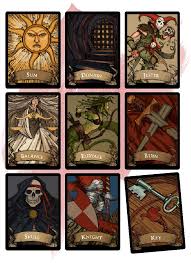The explorers had reached the top of the wizard’s tower. They had defeated the stone golem protecting the staircase to this level. They slay the Homoculus that was following the party and was keeping eyes on them for the master of the tower. But no wizard had yet been found. On this final room in the tower they carefully creep into the room. The thief ever so quietly slides into the shadows and enters the room. He searches but finds no sign of the wizard. Perhaps he has fled! The treasures to be found here are all ours now…….
But lying on the table is perhaps the most valuable treasure of all. A set of tiles are set out on the table face down. There are twenty two of them. Each is intricately designed with a pattern that boggles the mind. The very powerful magic in these cards seem to ooze out of them.
Grayson the magic user is the first to take a seat at the table. He is eager to find one of the cards that might increase his personal power. He draws Idiot card and has now lost 4 points of intelligence. He holds his face in his hands in shame crying at the edge of the room.
Gaon the Dwarf is distrustful of these cards and refuses to draw.
Longbottom the halfling thief decides that just one card is a small risk considering the possible rewards that might be his. He draws a Gem card and is immediately rich.
Gaon seeing this mere halfling gaining so much treasure quickly changes his mind and draws a card. Flames. He is now the worst enemy of a Devil. Now he cowers in fear as the others draw.
Jamox the priest draws a Vizier. He now knows the answer to the next dilemma. He smiles smugly with this knowledge.
Unam the ranger decides to take a chance as well. He has drawn the Donjon card and has been imprisoned. The deck disappears.
About this time the laughing of the evil wizard can be heard from the doorway. “So…you find my little treasures did you. I am glad you did. For now there are less of you to deal with……”
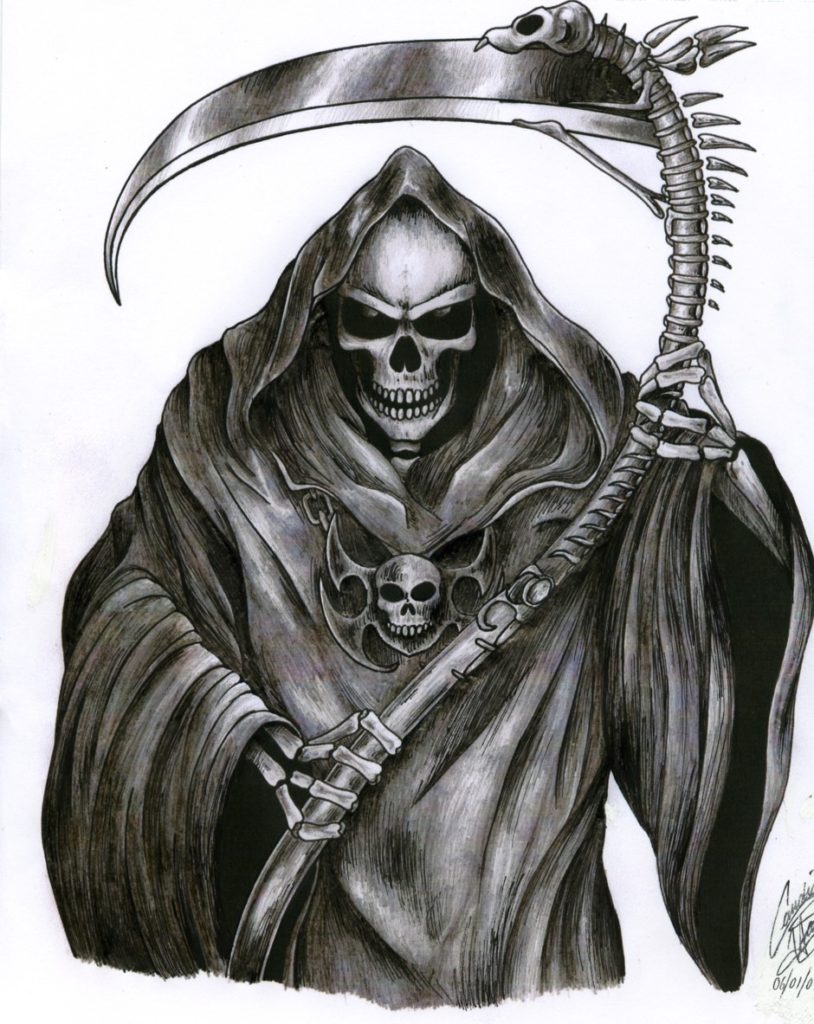
The Deck of Many Things in Dungeons and Dragons various editions
The Deck of Many Things has existed from the earliest edition of the game. In the first supplement to Dungeons and Dragons the item was first introduced. This was the Greyhawk supplement which was published in 1975. It has appeared in most of the later editions of the game over the years.
An article in the Dragon (issue #77) offered a much expanded version of the deck with 78 different tiles. Regardless of which edition that you play one thing is always certain when this item comes into play. Utter chaos!
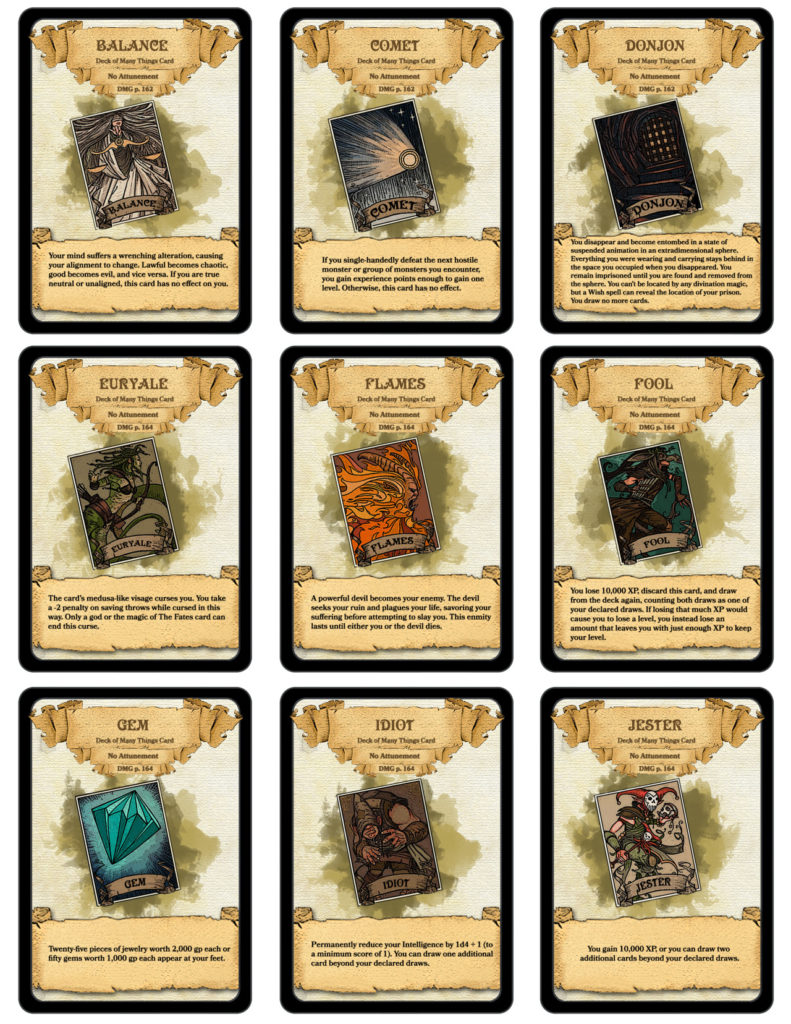
The Various Cards of the Deck of Many Things in Dungeons and Dragons
The basic cards have not changed all that much over the years. The specific mechanics of the different editions are the real differences in this magical item usage.
- Sun – Gain a beneficial (1st edition) magic item (wondrous in 5th edition) and 50000 experience points
- Moon – You are granted 1-4 wishes (1st edition) or gain the ability to cast 1-3 wish spells (5th edition)
- Star – Immediately gain 1-2 points on major ability score (1st edition) gain 2 points on an ability score not to exceed 24 (5th edition)
- Comet – Player must single handedly defeat the next hostile monster (or monsters) to gain the benefit of this card. If successful the adventurer will move to the mid point of their next experience level (1st edition) or move to the next experience level (5th edition)
- Throne – Gain a charisma of 18 and a small keep (1st edition) or gain proficiency in persuasion and ownership of a small keep which is held by monsters and must be cleared by you.
- Key – Gain a treasure map and a magic item (1st edition) or gain a rare or rarer magical weapon (5th edition) which appears in your hands
- Knight – Gain the service of a 4th level fighter (1st edition and 5th edition)
- Gem – Gain your choice of 20 pieces of jewelry or 50 gems (1st edition). The jewelry will all be gold set with gems. The gems choice will all be 1000 gold piece base gems. The 5th edition version is 25 pieces of 2000 gold piece value jewelry or 50 gems worth 1000 gold pieces.
- The Void – The body of the drawer still functions but the soul is trapped elsewhere (1st edition). The 5th edition variant is much the same except that the soul is located within an object at the discretion of the DM and is guarded by one or more powerful monsters. A wish will not restore the soul but will reveal the location of it.
- Flames – Enmity between you and a devil. This will be a greater devil or arch devil (1st edition). Or with a powerful devil (5th edition). This creature will seek your ruin.
- Skull – Defeat death or forever be destroyed (minor death in 1st edition or avatar of death in 5th edition)
- Talons – All magic items owned by you are torn from you forever (1st edition) and artifacts are not destroyed but are removed (5th edition)
- Ruin – Immediately lose all wealth and real property (1st edition). Fifth edition excludes magic items in immediate possession.
- Euryale -A penalty of -3 on all saving throws versus petrification (1st edition) or -2 on all saving throws (5th edition)
- Rogue – One of your henchmen turns on you (1st edition) or an NPC of the DMs choice will become your enemy
- Balance – Change alignment or be judged (failing to adhere to this new alignment will result in total destruction) (1st edition) or your alignment will be changed to a diametrically opposed alignment (lawful good to chaotic evil for example). Those with a true neutral alignment would be unaffected (5th edition).
- Jester – Gain 10000 experience points or 2 more draws from the deck (both editions)
- Fool – Lose 10000 experience points. Draw again (both editions except that the 5th edition variant allows the player to keep just enough experience points to maintain the existing experience level)
- Vizier – Know the answer to your next dilemma (1st edition). The 5th edition variant puts a time limit of 1 year and broadens the information gained to include answers to a question or problem or puzzle.
- Idiot – Lose 1-4 points of intelligence and you may draw again (1st edition) or 1D4+1 points of intelligence and may draw again (5th edition)
- Fates – Avoid any situation you choose one time only. The wording is different between 1st and 5th edition but the meaning is pretty much the same.
- Donjon – You are imprisoned. Either by spell or physically. All gear and magical weapons are stripped from you. (1st edition) or you disappear and are entombed in suspended animation in an extradimensional sphere. All gear and magic items are left behind in the space you previously occupied. A wish spell can find your location but divinination magic cannot (5th edition).
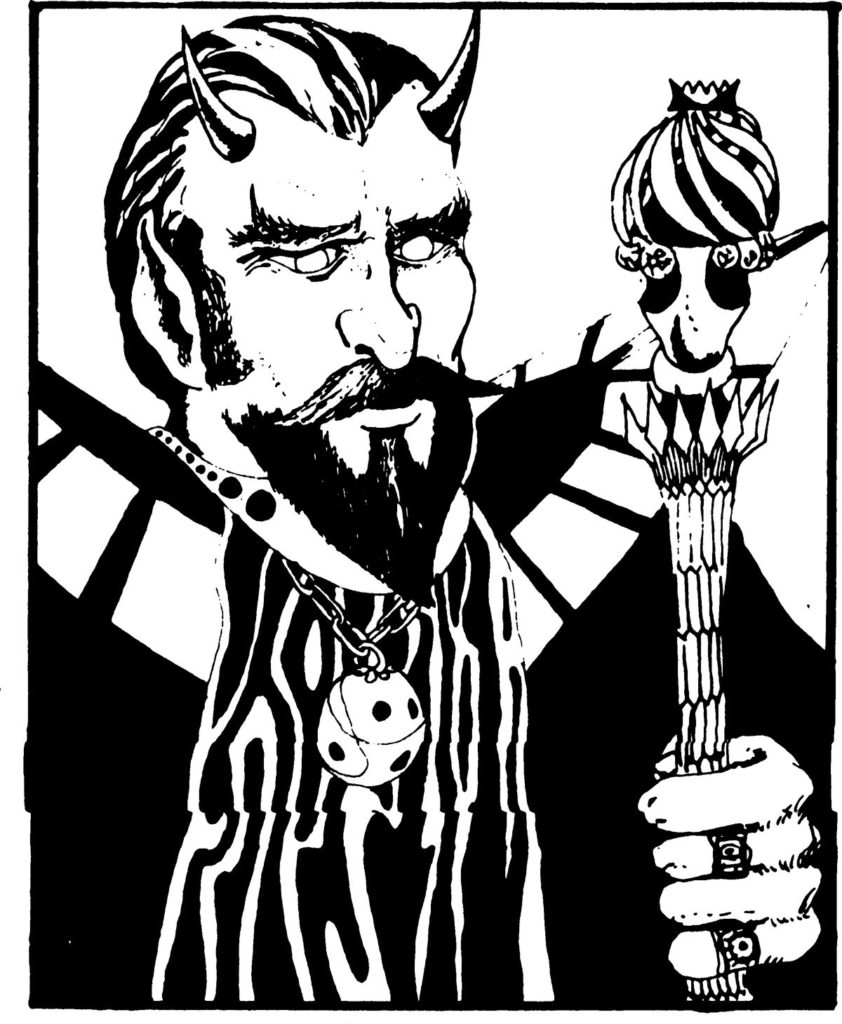
What exactly is enmity?
Two different cards suggest enmity with someone as a result. But what exactly does this mean? Both 1st and 5th edition variants discuss this. Enmity with a devil could be represented by hot anger, jealousy or envy. This enmity can never be satisfied until one or the other is slain. But in the case of the Rogue card the enmity is secret and might not be discovered until the new enemy decides to reveal his or her hatred of the adventurer in some dramatic way.
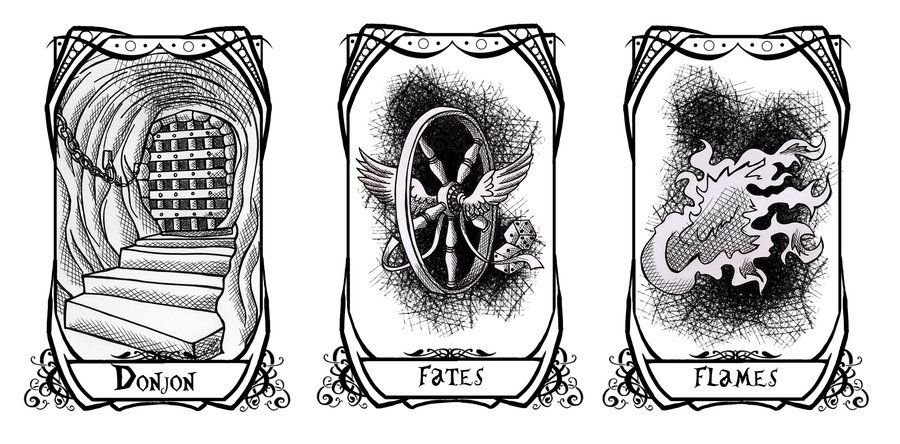
The Mechanics of the Deck of Many Things in Dungeons and Dragons
Regardless of the edition that you play a few rules are in order involving the use of the Deck of Many Things. A character cannot just keep drawing until they get something good and then quit. Instead they must declare how many tiles they will draw and then they are held to this (unless the cards themselves decide differently). Both editions can sometimes have a 13 card variant short deck (75% chance).
The Dungeon Master can use regular playing cards using the assigned cards to the individual tarot cards to determine which card is drawn. The deck disappears once the last card possible or when certain bolded cards are drawn (Void and Donjon) (1st edition). In 5th Edition the card drawn disappears unless it is the Fool or the Jester card which will reappear in the deck. The 5th Edition variant does not disappear on drawing the Void or Donjon cards.
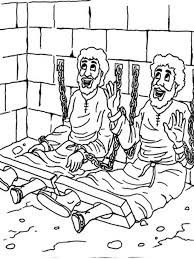
What does the Deck of Many Things Look Like?
It is often found in a box or pouch. Cards are typically made of ivory or vellum. The magic of the card immediately takes effect on the drawer. Each card is a thin plaque or plate. Each is engraved with magical glyphs, characters and sigils.
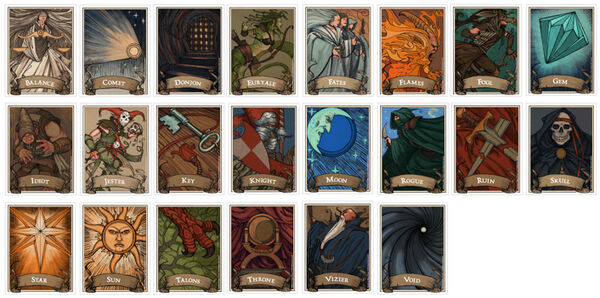
The effects of the Deck of Many Things in Dungeons and Dragons games
Whatever cards are drawn the game will be forever changed afterwards. Some characters may be destroyed or forever imprisoned. Others will become rich or powerful as a result of their draws. The effects are chaotic. And this is the point. Players just cannot help themselves when this deck is found. They will almost always want to draw from it. And some will suffer for it soon after.
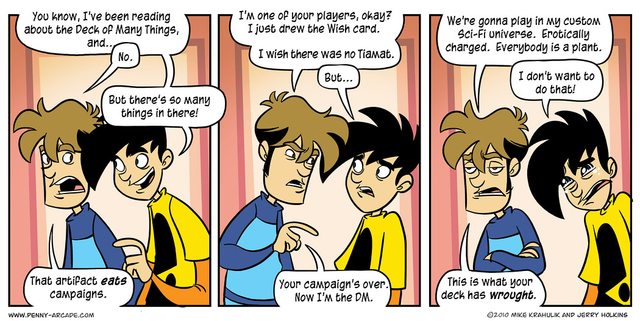
If you enjoyed this article then you might enjoy these:
- Sieges in Dungeons and Dragons
- Sleeping in Dungeons
- Kicking in doors in Dungeons
- Running Away in Dungeons and Dragons
- Division of Treasure
- Negotiation in Dungeons and Dragons
- Secret Passages
- Treasure in Dungeons and Dragons
